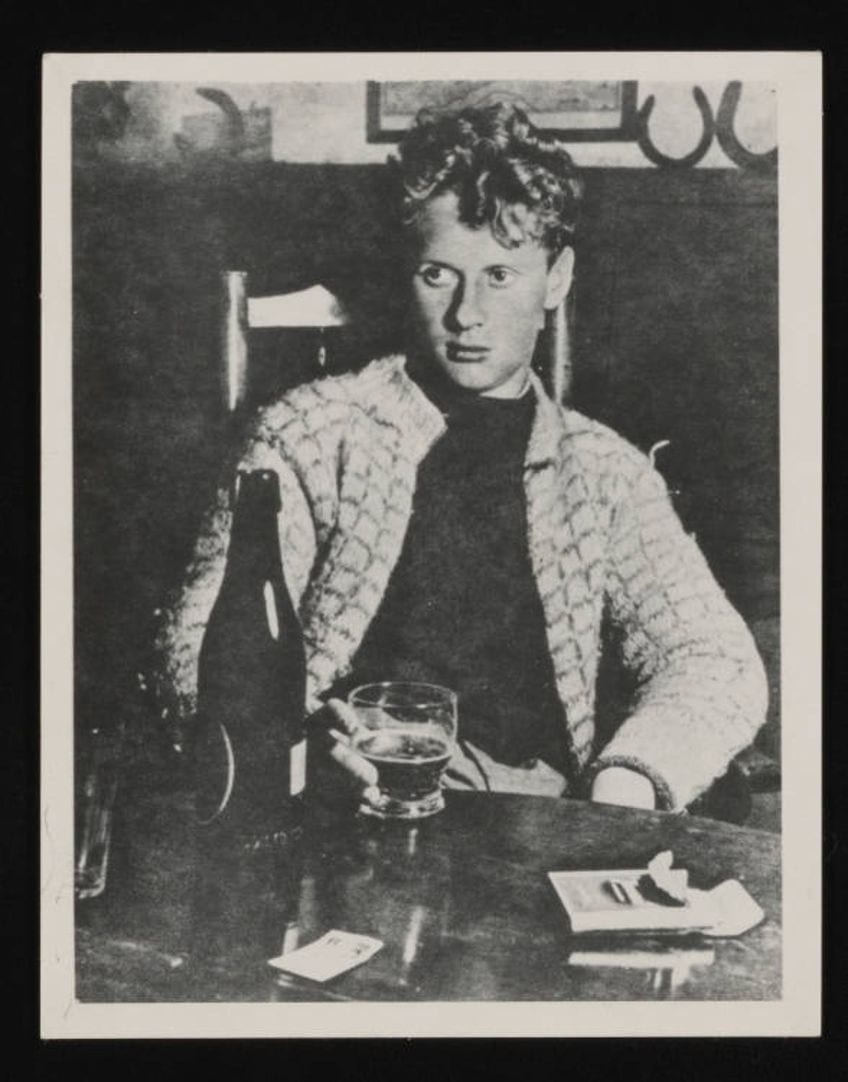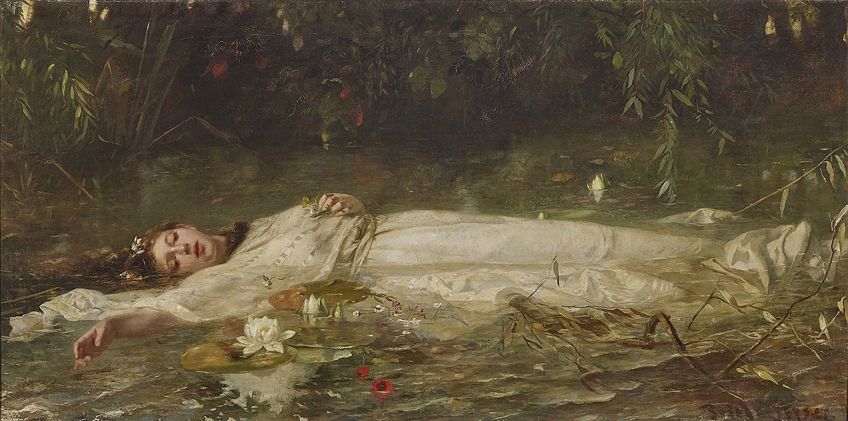“Do Not Go Gentle into That Good Night” Analysis – An Overview
Death is a topic that many people tend to have some kind of fixation on in their lives. This does make complete sense, and it makes sense because death is one of the few truly universal things in the world. We all eventually die. It is a rather morose observation, but one that we cannot escape. So, there are loads of poems about death, and they have all discussed, examined, and explored the concept in varying degrees of detail. One such poem is the one that we will be discussing today in our Do Not Go Gentle into That Good Night analysis. This Dylan Thomas poem is often seen as one of the very best of its kind, and if you’d be interested in an analysis of it, stick around!
Do Not Go Gentle into That Good Night by Dylan Thomas Analysis
| Date Published | 1951 |
| Type of Poem | Villanelle |
| Rhyme Scheme | ABA ABA ABA ABA ABA ABAA |
| Meter | Iambic pentameter |
| Topic | Death |
When it comes to a Do Not Go Gentle into That Good Night analysis, there are several aspects of the text and the context around it that are worthy of our time and attention. For instance, we should have a look at the author who wrote the poem in the first place and some of the themes of the poem. Any analysis of a text such as this can also do with certain things before getting into the analysis itself, such as a summary of the text as a whole for those who may desire such a thing.

Do Not Go Gentle into That Good Night Analysis Summary Points
Why are summaries such a useful thing to have? Well, basically because they distill all the primary information from something down into something that is nice and easily digestible. This is why I have taken some time aside right here to give you a nice little summary before we actually get into the swing of things:
- Do Not Go Gentle into That Good Night is a villanelle. This is a type of poem that is oriented around a very specific formal structure. It makes use of a structure in which every single stanza contains one of two repeating lines that are then both repeated in the final stanza. This repetition is considered integral to the overall structure and layout of the villanelle.
- Do Not Go Gentle into That Good Night is about death. There are many famous poems about death in the world, but this is probably one of the most famous of them all, especially of those from the 20th The text is geared toward a refusal to give in to death and to never give up for as long as someone is able to cling to life. The desperate tone of the poem has made it a favorite.
- Do Not Go Gentle into That Good Night is by Dylan Thomas. This figure was a Welsh-born writer who did not actually write in the Welsh language but did come to be seen as one of the best-known and most influential writers who hailed from the country. His work included poetry and other writing, such as in his career as a reporter, but he is best known for his poetry, especially the one that we will discuss today.
The whole point of this summary was to help you get into the swing of things, and hopefully, that has occurred. However, a summary will never have all the information that you might be interested in having about a certain topic.
So, if this is also the case with you, then jump into the biography of the man behind it all and keep reading after that too!
Biography of Dylan Thomas
| Poetic Movement | 20th century Romanticism |
| Years | 1914 – 1953 |
| Place of Birth | Uplands, Swansea, Wales |
| Known For |
|
Dylan Thomas was a famous Welsh poet who was predominantly active in the early to mid-20th century before he passed away at a relatively young age. He would eventually come to be seen as one of the most notable and famous Welsh poets of both his own time into the present day. He started his career early as a reporter and was writing and working by the age of 16. Many of his most famous poems appeared much later in his career, but the robust nature of his career also means that he produced a rather large body of work even though he is mostly known for a number of poems. He still has fans that read his work in the present day.

An In-Depth Do Not Go Gentle into That Good Night Analysis
It’s now time for us to actually get this Do Not Go Gentle into That Good Night analysis underway! Before we get to the text itself, let’s briefly chat about the structure of the poem in question. This text is a villanelle. This means that it is a highly formal type of poetry that follows a particular structure. One of the principal ideas behind the villanelle is how it makes use of repetitive elements. This is because two lines are repeated in an alternating formation throughout the poem, and they are both repeated in the final stanza.
That stanza is also the only one with four lines. Every other stanza uses three lines, which makes them tercets.
In this type of poem, the first and third lines of the first stanza, which is a type of stanza that is known as a tercet, are repeated. They are specifically repeated in the last line of each of the other stanzas, and then they are both used at the end of the final stanza. This use of heavy repetition is what distinguishes the villanelle from other poetic forms. And with all of that out of the way, we can get to the actual Do Not Go Gentle into That Good Night analysis that we all came here to see!

Stanza One
Do not go gentle into that good night,
Old age should burn and rave at close of day;
Rage, rage against the dying of the light.
The first tercet of the poem establishes the general tone for the rest of the stanzas. The first line informs us that we must not go into “that good night”. On its own, this would not have much meaning to it, but the second line mentions old age and how it should burn brightly when we are near our ends. So, we can now apply that understanding to the first line to understand that the “good night” which will be repetitively discussed is a metaphor for death. The use of the term “good” creates a difficult image because of the negativity that the speaker has attached to something that they’ve simultaneously termed a positive.
The last line tells us that we need to fight against the end of life. Here, we can already see what the poem wants to tell us.

Stanza Two
Though wise men at their end know dark is right,
Because their words had forked no lightning they
Do not go gentle into that good night.
The second tercet opens with the idea of those who are at their end. It acknowledges that those who are wise know that the end is going to come and that it is right. They, as the second line attests, may not produce much of a verbal fight, but they do not allow themselves to easily die. They may know and understand that the end has come and that we will all eventually die, but death is an unknown that we can fight against as hard as we can muster.
The poem wants us to fight, it wants us to never give up, and to cling onto what is known for as long as possible.

Stanza Three
Good men, the last wave by, crying how bright
Their frail deeds might have danced in a green bay,
Rage, rage against the dying of the light.
The third stanza examines these good men who weep for the ending that is coming to them. They see their actions in life as being “frail deeds”, but there is positivity in life as they might have danced despite the ultimate end that comes their way. The final line is one of the repeated lines, and we are shown that even these good men should rage and fight against the end of their lives.
We must all fight for it.

Stanza Four
Wild men who caught and sang the sun in flight,
And learn, too late, they grieved it on its way,
Do not go gentle into that good night.
The fourth stanza reinforces that too. It looks at so-called “wild men”, who basked in the metaphorical sun of life, and they learned too late that the ending was coming to them. They too must fight, scratch, and claw against the ending that is coming for everyone. The image of realizing too late is a saddening one, but it is one that many of us will likely experience.
We typically live our lives with no thought of the death that is coming unto us.

Stanza Five
Grave men, near death, who see with blinding sight
Blind eyes could blaze like meteors and be gay,
Rage, rage against the dying of the light.
The final tercet of the poem looks at those who are near death. They can see the “good night” coming, but they can also see the light of life more brightly than ever before. The second line, which mentions their “blind eyes” seeing the light of a life that they can still cling to.
Once again, the final line tells us to battle against the ending of our lives so that we might better live our lives for those last few moments that we have.

Stanza Six
And you, my father, there on the sad height,
Curse, bless, me now with your fierce tears, I pray.
Do not go gentle into that good night.
Rage, rage against the dying of the light.
The final stanza of this Do Not Go Gentle into That Good Night analysis is different from the others. We now see that the poem has transitioned into its quatrain structure so that both of the repeated lines can be used one after the other. However, the first two lines reinforce how these repeated lines are used. The first line tells us that this poem is a personal one as it refers to the dying man as “my father”. The speaker sees his father nearing death, and he can see him on the edge of life, about to fall, and through the tears he prays for those repeated words. He asks that his father does not give up and plunge into the “good night” and that he instead rages against it and lives for as long as he is able to live.
The poem thus concludes.

The Themes of Do Not Go Gentle into That Good Night
There are a number of themes explored in my Do Not Go Gentle into That Good Night analysis above, and they principally revolve around the notion of death and a refusal to easily give in to it. The poem is quite steadfast in its battle against death itself, and it begs us to never simply give in to it. This can be seen as a means of fighting against the unknown that is death. We know what life is because we have been trapped within it for so long, and there may be difficulties associated with life, but it is still something knowable, and you know what they say: better the devil you know.
We can interpret and understand this kind of an idea as a celebration of life by proxy.
The poem does not want to give in to the grief and misery of death and instead embraces the strength of carrying on. This poem has likely resonated with so many over the decades because many of us are afraid of what death holds. We all often have our own ideas about what happens after we die, but we won’t know until it happens. So, Do Not Go Gentle into That Good Night touches a nerve that many will probably understand on a primal level.
The Influence of Do Not Go Gentle into That Good Night
There have been many references and allusions to Do Not Go Gentle into That Good Night over the years. For instance, references can be found in works by authors as diverse as George R.R. Martin, Derek Landy, and Iggy Pop. This poem can even be found referenced in movies like Independence Day and Dangerous Minds. The ideas that the poem expresses, and its tenacity in the face of death itself, have made it an immensely popular text that has withstood the test of time for decades.

There are many fantastic poems by Dylan Thomas, but this poem is probably the most famous of them all. This Do Not Go Gentle into That Good Night analysis has given an overview of the author, the poem itself, the themes, and the influences of the text. Much more could be said about the poem, and perhaps there are thoughts that you have with regard to how it discusses death. If you feel that this may be the case, then maybe do your own analysis of the text and see what you can learn through your own interpretation of it!
Frequently Asked Questions
What Is Do Not Go Gentle into That Good Night by Dylan Thomas?
This is a poem about death, and probably one of the most famous of its kind from the 20th century. The text explores the ideas of aging and death through the lens of a refusal to allow oneself to give in to death when there are still other alternatives for us to explore. The text has come to be an influential text that has resonated with many around the world because of the specific way that it tackles this topic.
Who Was Dylan Thomas?
Dylan Thomas was a poet born in Uplands, Swansea, Wales, and would have a lengthy career simply because he started said career particularly early. While he has since become seen as one of the greatest Welsh poets, he passed away at the relatively young age of 39. Some of his most famous poems were produced in the few years prior to his death. Today, his work remains popular with many in the English-speaking world.
What Kind of a Poem Is Do Not Go Gentle into That Good Night?
Do Not Go Gentle into That Good Night is a type of highly formalized poem that is known as a villanelle. This indicates that it’s comprised of certain specific formal requirements. The poem has to have 19 lines that are arranged as five tercets that are ultimately followed by a concluding quatrain. Each of these tercets makes use of repetition of two particular lines that alternate throughout the poem. This repetition is integral to the villanelle structure.
What Is the Rhyme Scheme of Do Not Go Gentle into That Good Night?
As a villanelle, the rhyme scheme of Do Not Go Gentle into That Good Night is quite specific. It is arranged as ABA ABA ABA ABA ABA ABAA. This is also the structure of the poem as a villanelle. Each tercet of the poem makes use of repetition, and the final quatrain ends off with two lines of repetition. All of this contributes to the general rhyme scheme of the poem.
What Are the Themes of Do Not Go Gentle into That Good Night?
The principal themes that were explored in my Do Not Go Gentle into That Good Night analysis have to do with the idea of death and the struggle against it. The way in which the speaker explicitly tells us to not give in to death has become a powerful means of exploring the notion of death and the difficulties that go along with it. The poem wants us to celebrate life by never giving in to death.
Justin van Huyssteen is a freelance writer, novelist, and academic originally from Cape Town, South Africa. At present, he has a bachelor’s degree in English and literary theory and an honor’s degree in literary theory. He is currently working towards his master’s degree in literary theory with a focus on animal studies, critical theory, and semiotics within literature. As a novelist and freelancer, he often writes under the pen name L.C. Lupus.
Justin’s preferred literary movements include modern and postmodern literature with literary fiction and genre fiction like sci-fi, post-apocalyptic, and horror being of particular interest. His academia extends to his interest in prose and narratology. He enjoys analyzing a variety of mediums through a literary lens, such as graphic novels, film, and video games.
Justin is working for artincontext.org as an author and content writer since 2022. He is responsible for all blog posts about architecture, literature and poetry.
Learn more about Justin van Huyssteen and the Art in Context Team.
Cite this Article
Justin, van Huyssteen, ““Do Not Go Gentle into That Good Night” Analysis – An Overview.” Art in Context. February 3, 2024. URL: https://artincontext.org/do-not-go-gentle-into-that-good-night-analysis/
van Huyssteen, J. (2024, 3 February). “Do Not Go Gentle into That Good Night” Analysis – An Overview. Art in Context. https://artincontext.org/do-not-go-gentle-into-that-good-night-analysis/
van Huyssteen, Justin. ““Do Not Go Gentle into That Good Night” Analysis – An Overview.” Art in Context, February 3, 2024. https://artincontext.org/do-not-go-gentle-into-that-good-night-analysis/.









